In our Today In History Reading List feature, we take the events of a particular day in history and try to give you a work of fiction and a work of non-fiction relating to those events.
1431 Joan d’Arc Is Burned At The Stake
Born a peasant in rural France during the later part of the Hundred Years war, Joan d’Arc began having visions in her teens. She clammed that Archangel Michael, Saint Margaret, and Saint Catherine were telling her to support the French King Charles VII defeat the English and their supporters and recover France. This message struck a cord with French of all class and even Charles VII supported her. After leading French armies to victory she was captured by English ailed forces, tried, found guilty and burned at the stake in Rouen at age 19. She has since been canonized and is considered a French patriot.

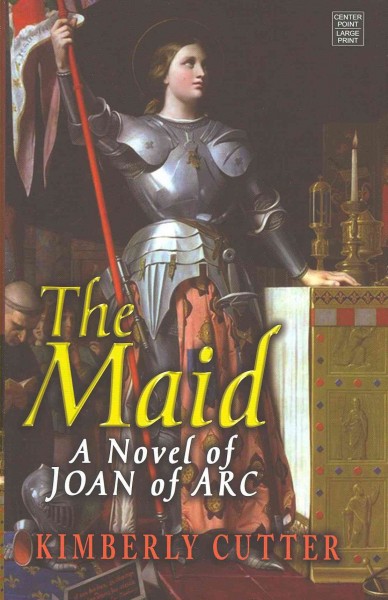
Joan of Arc: A History by Helen Castor
We all know the story of Joan of Arc. A peasant girl who hears voices from God. A warrior leading an army to victory, in an age that believes women cannot fight. The Maid of Orleans, and the saviour of France. Burned at the stake as a heretic at the age of just nineteen. Five hundred years later, a saint. Her case was heard in court twice over. One trial, in 1431, condemned her; the other, twenty-five years after her death, cleared her name. In the transcripts, we hear first-hand testimony from Joan, her family and her friends: a rare survival from the medieval world. What could be more revealing?
The Maid: A Novel of Joan of Arc by Kimberly Cutter
It is the fifteenth century and the tumultuous Hundred Years War rages on. France is under siege, English soldiers tear through the countryside destroying all who cross their path, and Charles VII, the uncrowned king, has neither the strength nor the will to rally his army. And in the quiet of her parents’ garden in Lorraine, a peasant girl sees a spangle of light and hears a powerful voice speak her name. Jehanne. The story of Jehanne d’Arc, the visionary and saint who believed she had been chosen by God, who led an army and saved her country, has captivated our imagination for centuries. But the story of Jeanne – the girl – whose sister was murdered by the English, who sought an escape from a violent father and a forced marriage, who taught herself to ride and fight, and who somehow found the courage and tenacity to convince first one, then two, then thousands to follow her, is at once thrilling, unexpected and heart-breaking. Rich with unspoken love and battlefield valor, The Maid is a novel about the power and uncertainty of faith, and the exhilarating and devastating consequences of fame.
1536 Henry VIII of England Marries Jane Seymore
Jane Seymore was a lady-in-waiting to Henry’s first two wives Catherine of Aragon and Anne Boleyn. Henry had developed and interest in her at some point prior to Anne’s execution and they were betrothed the day after Anne was beheaded on May 20. She gave birth to the future Edward IV on October 12 1537 and died of complications of that birth on October 24. She is the only one of Henry’s wives to be given a Queen’s burial and the only one buried with him in Windsor Castle.

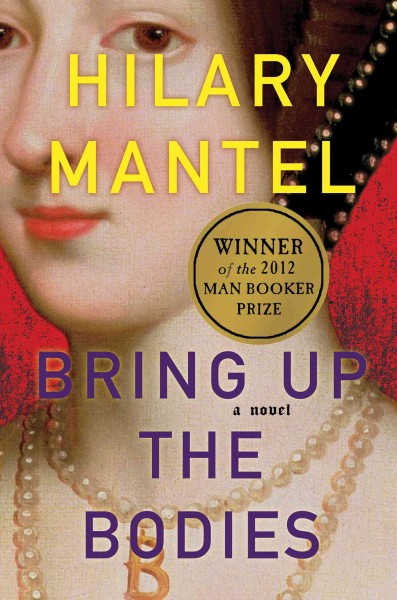
The Six Wives of Henry VIII by Alison Weir
The tempestuous, bloody, and splendid reign of Henry VIII of England (1509-1547) is one of the most fascinating in all history, not least for his marriage to six extraordinary women. In this accessible work of brilliant scholarship, Alison Weir draws on early biographies, letters, memoirs, account books, and diplomatic reports to bring these women to life. Catherine of Aragon emerges as a staunch though misguided woman of principle; Anne Boleyn, an ambitious adventuress with a penchant for vengeance; Jane Seymour, a strong-minded matriarch in the making; Anne of Cleves, a good-natured and innocent woman naively unaware of the court intrigues that determined her fate; Catherine Howard, an empty-headed wanton; and Catherine Parr, a warm-blooded bluestocking who survived King Henry to marry a fourth time.
Bring Up the Bodies: A Novel by Hilary Mantel
The sequel to Hilary Mantel’s 2009 Man Booker Prize winner and New York Times bestseller, Wolf Hall, delves into the heart of Tudor history with the downfall of Anne Boleyn. Though he battled for seven years to marry her, Henry is disenchanted with Anne Boleyn. She has failed to give him a son and her sharp intelligence and audacious will alienate his old friends and the noble families of England. When the discarded Katherine dies in exile from the court, Anne stands starkly exposed, the focus of gossip and malice. At a word from Henry, Thomas Cromwell is ready to bring her down. Over three terrifying weeks, Anne is ensnared in a web of conspiracy, while the demure Jane Seymour stands waiting her turn for the poisoned wedding ring. But Anne and her powerful family will not yield without a ferocious struggle. Hilary Mantel’s Bring Up the Bodies follows the dramatic trial of the queen and her suitors for adultery and treason. To defeat the Boleyns, Cromwell must ally with his natural enemies, the papist aristocracy. What price will he pay for Anne’s head?
1814 Treaty of Paris Ends the War Between France and the Sixth Coalition
After Napoleon’s defeat in Russian in 1812 Prussia, Austria, Sweden, Russia, Great Britain, Spain, and Portugal form a Sixth Coalition. This coalition so heavily out numbered Napoleon that even though he won several victories against them, France was still forced to surrender in March 1814 and Napoleon was exiled to Elba. Besides officially ending hostilities the treaty also set France’s borders at their 1792 boundaries and created the Congress of Vienna to adjudicate the remaining disputes with France. The treaty essentially became void in 1815 when Napoleon escaped from Elba to lead a force to defeat at the battle of Waterloo in July.
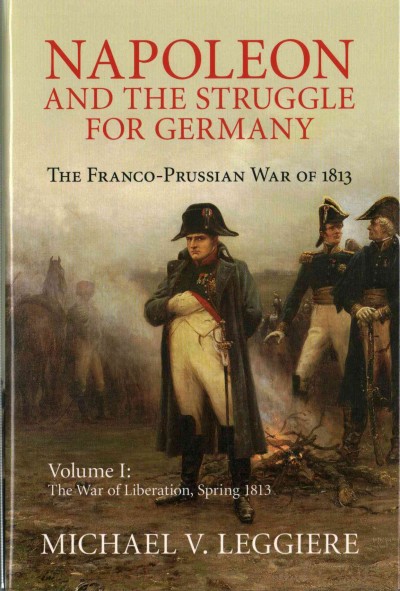

Napoleon and the Struggle for Germany: The Franco-Prussian War of 1813 by Michael V. Leggiere
This is the first comprehensive history of the campaign that determined control of Germany following Napoleon’s catastrophic defeat in Russia. Michael Leggiere reveals how, in the spring of 1813, Prussia, the weakest of the Great Powers, led the struggle against Napoleon as a war of national liberation. Using German, French, British, Russian, Austrian and Swedish sources, he provides a panoramic history which covers the full sweep of the battle for Germany from the mobilization of the belligerents, strategy and operations to coalition warfare, diplomacy and civil-military relations. He shows how Russian war weariness conflicted with Prussian impetuosity, resulting in the crisis that almost ended the Sixth Coalition in early June. In a single campaign, Napoleon drove the Russo-Prussian army from the banks of the Saale to the banks of the Oder. The Russo-Prussian alliance was perilously close to imploding only to be saved at the eleventh-hour by an armistice.
Sharpe’s Revenge: Richard Sharpe and the Peace of 1814 by Bernard Cornwell
It is 1814 and the defeat of Napolean seems imminent – if the well-protected city of Toulouse can be conquered. For Richard Sharpe, the battle turns out to be one of the bloodiest of the Peninsula Wars, and he must draw on his last reserves of strength to lead his troops to victory. But before Sharpe can lay down his sword, he must fight a different sort of battle. Accused of stealing Napolean’s personal treasure, Sharpe escapes from a British military court and embarks on the battle of his life – armed only with the unflinching resolve to protect his honor.
1941 Members of the Greek Resistance Tear Down the German Flag From the Acropolis
In April 1941 German forces invaded to Greece to assist their Italian ally in their foundering Greek campaign. By May they had captured Athens and raised a German flag over the Acropolis. On the night of May 30 two left leaning Greeks, Manolis Glezos and Apostolos Santas, climbed the Acropolis and tore down the flag. They would go on to be leaders in the resistance and politicians after the war. Their act of defiance became a symbol of resistance to all countries subject to German occupation.
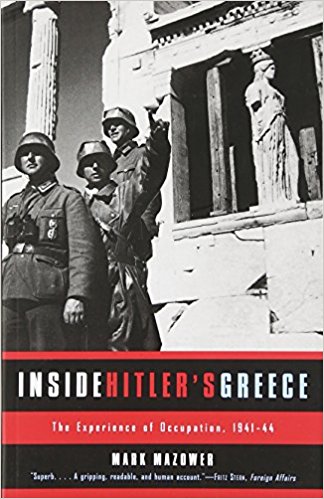
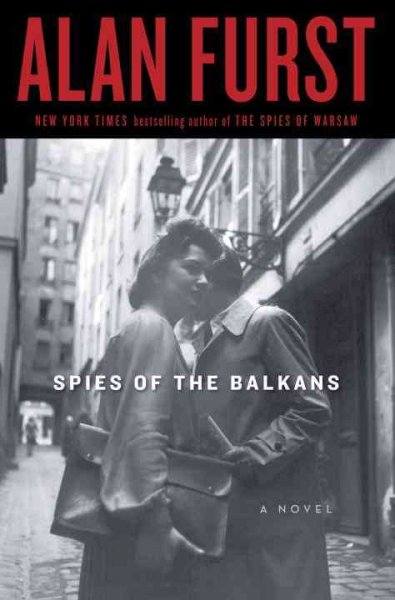
Inside Hitler’s Greece: The Experience of Occupation, 1941-44 by Mark Mazower.
This gripping and richly illustrated account of wartime Greece explores the impact of the Nazi Occupation upon the lives and values of ordinary people. The first full account of the experience of occupation, it offers a vividly human picture of resistance fighters and black marketeers, teenage German conscripts and Gestapo officers, Jews and starving villagers.
Spies of the Balkans by Alan Furst
Greece, 1940. Not sunny vacation Greece: northern Greece, Macedonian Greece, Balkan Greece the city of Salonika. In that ancient port, with its wharves and warehouses, dark lanes and Turkish mansions, brothels and tavernas, a tense political drama is being played out. On the northern border, the Greek army has blocked Mussolini’s invasion, pushing his divisions back to Albania the first defeat suffered by the Nazis, who have conquered most of Europe. But Adolf Hitler cannot tolerate such freedom; the invasion is coming, it’s only a matter of time, and the people of Salonika can only watch and wait. At the center of this drama is Costa Zannis, a senior police official, head of an office that handles special “political” cases. As war approaches, the spies begin to circle, from the Turkish legation to the German secret service. There’s a British travel writer, a Bulgarian undertaker, and more. Costa Zannis must deal with them all. And he is soon in the game, securing an escape route from Berlin to Salonika, and then to a tenuous safety in Turkey, a route protected by German lawyers, Balkan detectives, and Hungarian gangsters. And hunted by the Gestapo.


